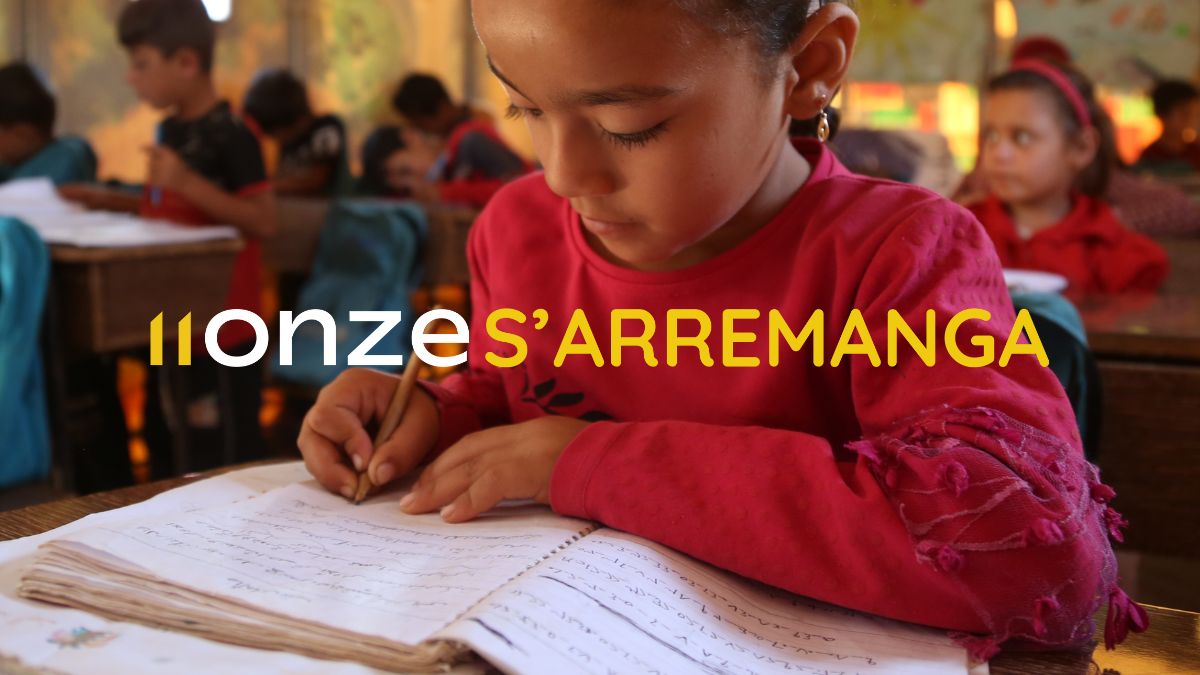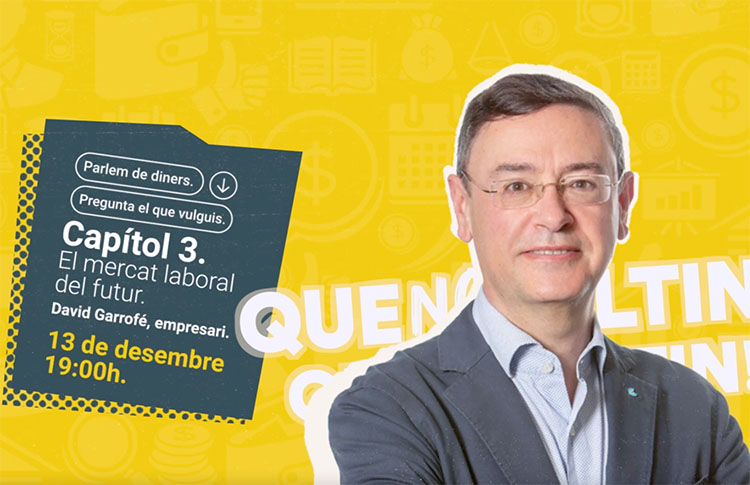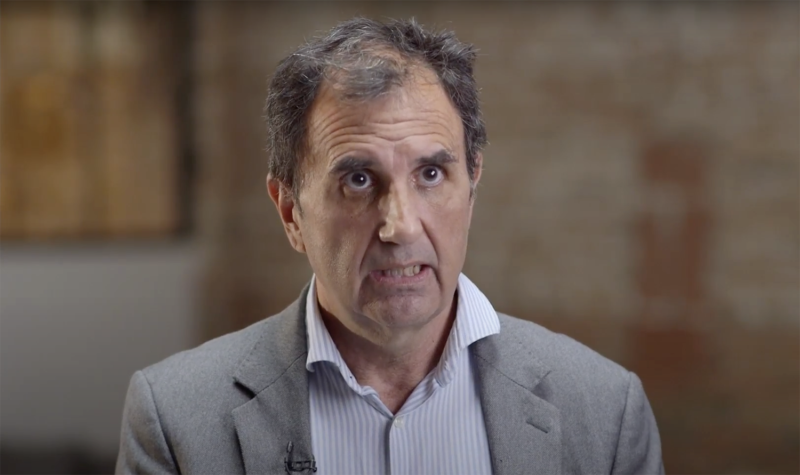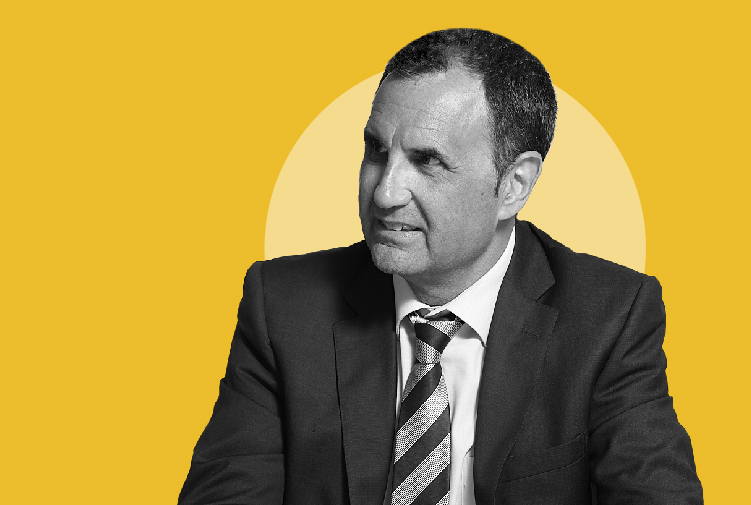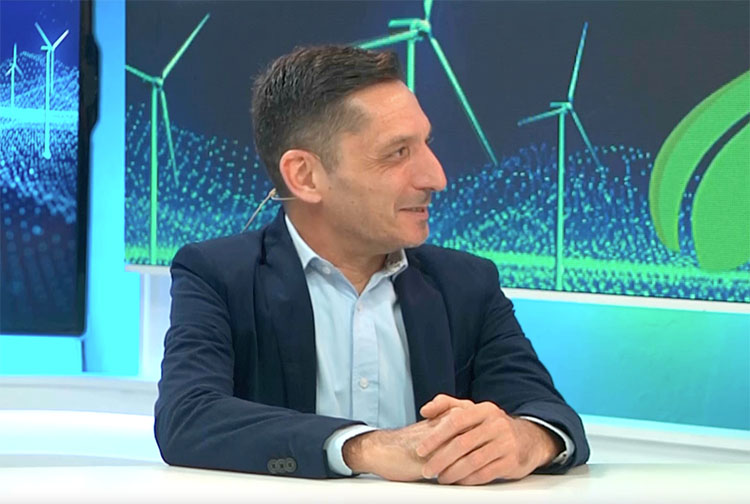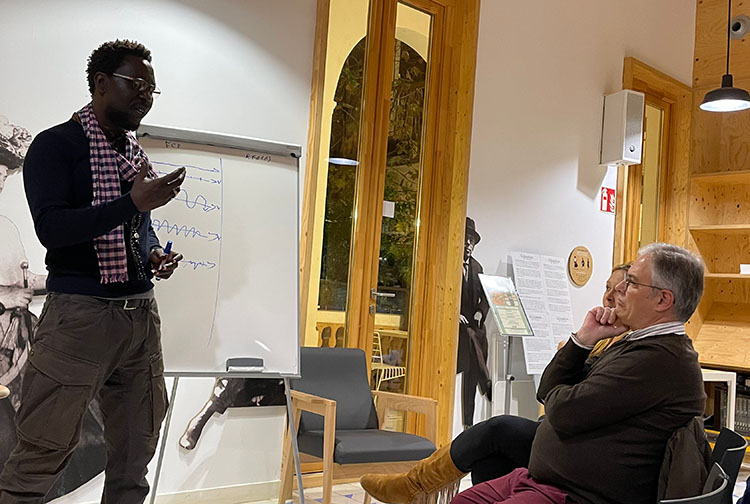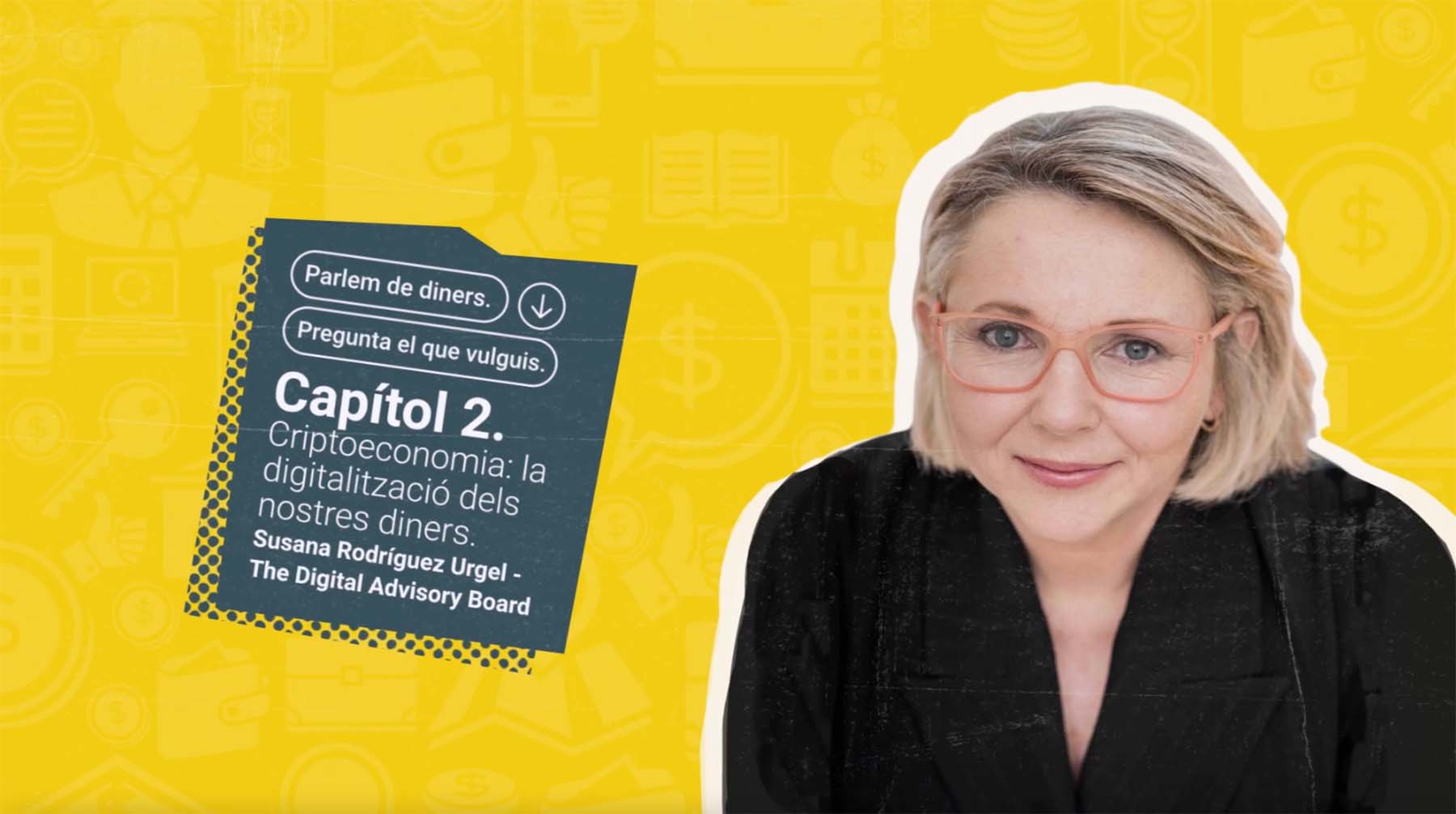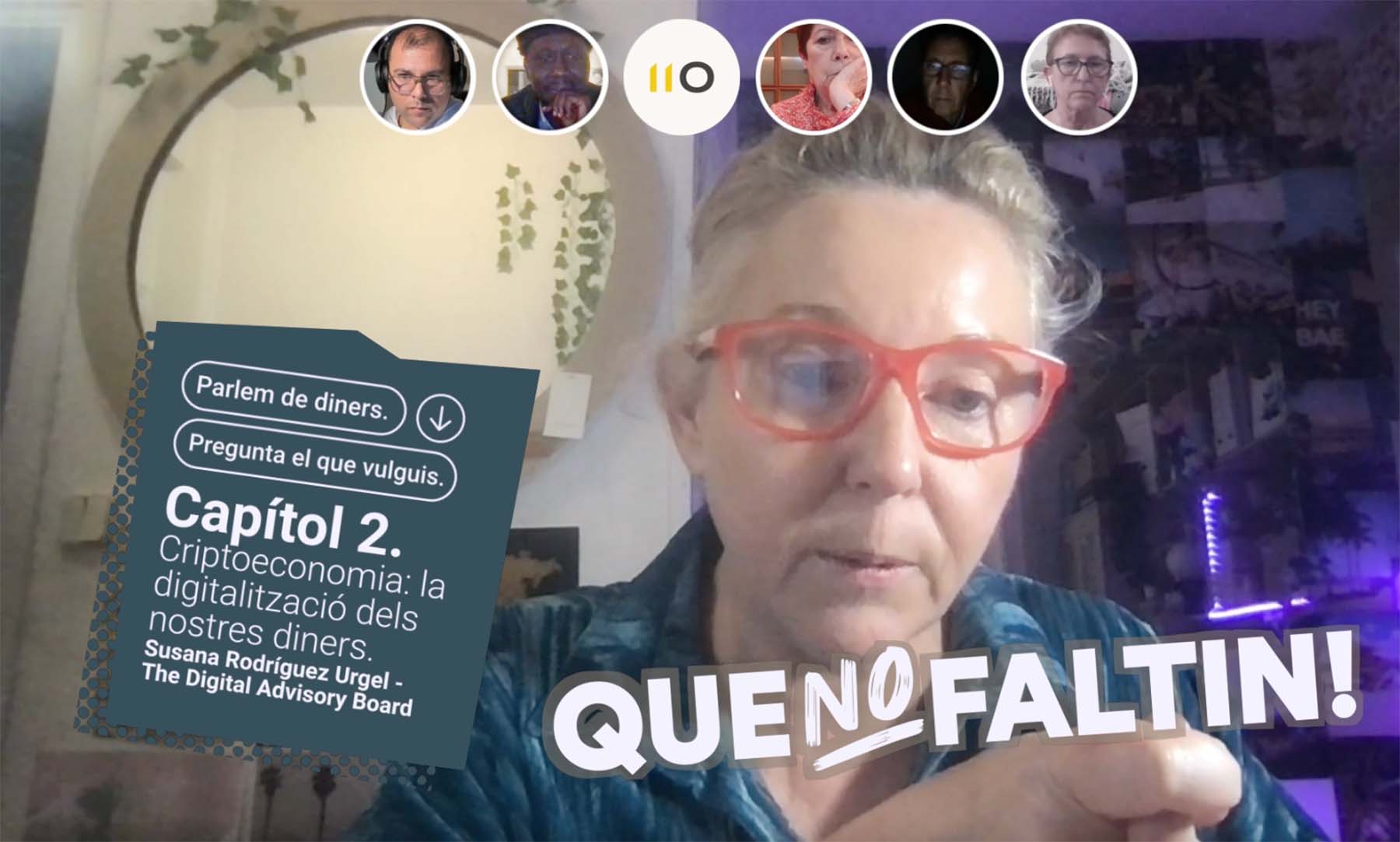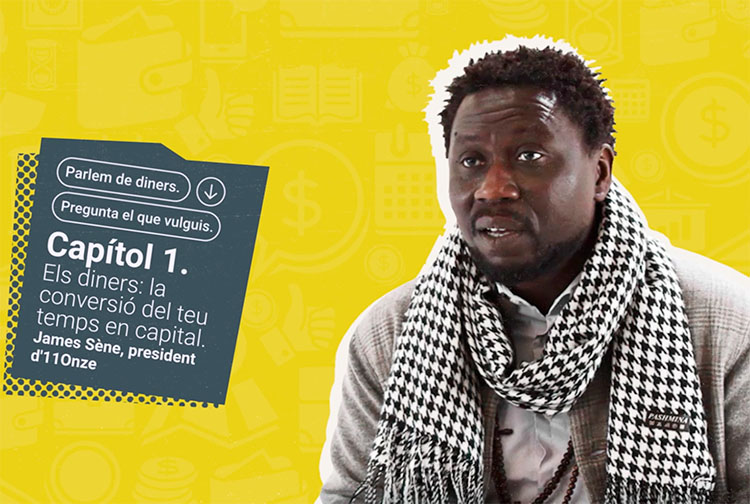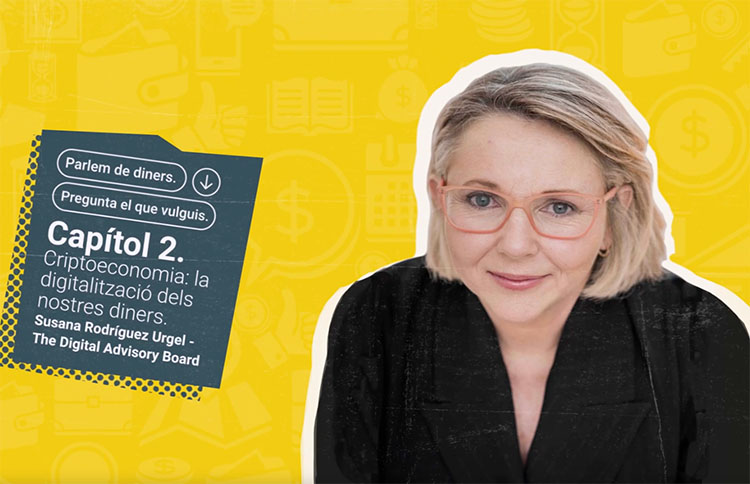What does the gold industry contribute to society?
Gold mines exist on every continent except Antarctica, often in remote and impoverished areas. World Gold Council data show that responsible gold mining contributes to the economic and social development of many local communities.
Gold has been a unique precious metal with great emotional, cultural and financial value throughout history. In addition, gold has an increasing number of technological applications, including in mobile phones, medical test kits and airbags for vehicles.
Gold resources are also a key source of opportunities in many developing countries. As a World Gold Council report shows, responsible gold mining generates numerous jobs, facilitates the construction of infrastructure and contributes to the development of local communities, as well as bringing in substantial revenues through taxes and royalties.
Well-paid employment
Analysis of the operations of 31 of the 32 member companies of the World Gold Council shows that in 2020 they were responsible for nearly 200,000 direct jobs and 1.2 million indirect jobs in 38 countries. In addition, the reuse of wages earned in the gold supply chain supports a further 700,000 jobs in the wider economy.
Workers in the gold industry are well paid, averaging six times the national average wage. And it should be noted that 95 % of the employees belong to the country where the mine is located. The percentage of expatriates has halved in the last seven years.
Development of local communities
Companies in the sector recognise the mutual benefits of integrating as much as possible into the local economy, using indigenous people and supply chains. This underpins their “licence to operate” and allows the community to benefit from the economic and social development of the mine.
Indeed, operating in an isolated enclave with the local community’s back turned is no longer a viable option for any mining company. To be successful, they must generate sustainable benefits for local people, especially in the poorest and most remote locations, where there are often few alternative avenues for economic activity and community progress.
This has meant that by 2020 the World Gold Council’s member companies spent more than €430 million on community investment. In addition to meeting the needs of a gold mine, it is clear that investments in roads, water, and electricity supply are of long-term benefit to businesses and communities in the area.
We must add €7.6 billion paid in taxes and royalties, which go back into improving public services, education, health, and infrastructure in the countries where the mines are located. In many developing countries, these taxes constitute a significant proportion of the national tax base and benefit both mining and non-mining areas.
A significant contribution to GDP
In total, the contribution of these companies to the GDP of the 38 countries where they operate is estimated at around 40 billion euros. For every euro of gold production, at least 63 cents ended up as wages, taxes, or income for local business owners.
While historically mining operations have not always led to improvements in the human and social development of local communities, there is a growing trend towards strict environmental, governance and social protocols as a condition of operating. As a result, the gold industry is becoming an important economic and social driver for many countries around the world.
If you want to discover the best option to protect your savings, enter Preciosos 11Onze. We will help you buy at the best price the safe-haven asset par excellence: physical gold.
Have you ever had the feeling that you are wasting time while attending a meeting with your teammates and/or your boss? You are in the meeting, but are you thinking about other things? Can these sensations be avoided by making meetings more efficient? We try to explain how.
According to team building and leadership specialists, one of the essential issues is to be clear about why you are calling a meeting. Sometimes, we have the feeling that we are in that room, simply because you have been told to or because it’s on the calendar, without a defined objective.
Nowadays, and after everything that has happened in the last year, there are also those who distinguish between the organisation of face-to-face meetings and virtual meetings, given that the latter are not always easy to control, either because everyone is talking at the same time or because the attendees’ connections start to fail.
But in any case, the essential guidelines are the same:
- Before convening a meeting, whether it is face-to-face or virtual, we must be clear about the objective: What do we want to achieve? Is it really necessary?
- If possible, it should be planned with enough time to inform the interested parties, so that they can prepare for the meeting as well as the convenor, and so that the time is used to the maximum. Similarly, if necessary, it is advisable to provide attendees with the necessary documentation.
- The invitation should only reach the essential people. There is no point in having 20 people attending if only 5 are really interested and/or affected. For the company, time is money, and it is not productive to have a lot of people as forced spectators.
- Calculating the duration of the meeting is also important to avoid it taking longer than necessary, and obviously you have to be punctual in order to keep to the timetable. When calculating the duration of the meeting, we must think about setting aside time for requests and questions that can be asked at the end of the meeting.
- The space where the meeting is held, in the case of face-to-face meetings, must be adequate for the number of people convened, and must have all the technological and analogue tools necessary to clearly set out all the issues to be discussed.
- Once in the meeting, we have to assign the “role” that each of the attendees has to assume, if the interventions have to be marked. What is clear is that there must be a moderator, who will usually be the convenor, to avoid diluting the objective for which we are meeting.
- For a correct development, before starting, the moderator must read the agenda in order to be clear about the issues to be discussed or resolved, and make clear the reason for the meeting. From this point onwards, he or she must ensure that the time allocated to each of the topics and speakers is respected, so that the established timetable is adhered to and everyone can make their points.
- Once all the scheduled interventions have been completed, it is time for Q&A, in order to polish the topics dealt with, resolve any doubts that may have arisen, and decide whether any new contributions should be made before ending the session.
- In the closing session, it is important to define the conclusions drawn, as well as the solutions to the problems that have arisen during the meeting, and the deadlines for carrying out the actions to be undertaken.
- Finally, it is important to draw up a summary or a record of the minutes that includes everything that has been presented, interventions, conclusions, and even details the decisions that have been taken and the actions that must be carried out from now on.
The achievement of all these premises should guarantee effective and efficient internal meetings, meetings with suppliers and meetings with clients, so that we do not end up with a feeling of wasted time. It is especially important to make the most of time in order to achieve productivity and efficiency objectives that generate the economic benefits necessary for the survival of an organisation, thus guaranteeing the professional and personal stability of all those involved.
Do you want to be the first to receive the latest news about 11Onze? Click here to subscribe to our Telegram channel
A UNHCR report on education and its importance in social inclusion shows that one of the most significant challenges facing refugee children is unequal access to education.
A common denominator of refugee crises is that, regardless of location, when families are forced to leave their homes, the stability of children’s lives is inevitably disrupted. Likewise, loss of security, dignity and access to education are among the most immediate consequences affecting displaced people.
A report was not necessary to understand the importance of ensuring that refugee children and youth have access to the education system, but it is important to know the numbers beyond the generic slogans that blur the problem. Specifically, to be able to provide the resources and tools needed to address the issues.
Talent is universal, education is not
The UNHCR report draws on data from more than 40 countries around the world and emphasises that, even before the pandemic, the proportion of 10-year-olds who cannot read or understand simple text was estimated at 57% in low- and middle-income countries, and 86% in sub-Saharan Africa, where millions of refugees live: “Poor quality education and lack of access to schools and colleges affect hundreds of millions of children. But there is no doubt that young refugees suffer most acutely”.
Data indicates how refugee children are falling behind non-refugee children in terms of access to quality education. The enrolment rate in kindergartens is only 42%, while primary education stands at 68%. Secondary education is significantly lower, at 37%, and superior education is only 6%, well below world levels, especially in richer countries.
By promoting an inclusive vision of education we can work towards a reality where all children, including refugees, have the same opportunities to grow, learn and aspire to a better future. This requires a collective solidarity effort that involves the participation of the whole of society, regardless of borders.
11Onze Rolls Up its Sleeves
From 11Onze we have decided to roll up our sleeves, and we want to build 50 Shelter Schools for the children of Northern Syria so that we can help 1,750 children. To make this possible, we need 100,000 euros that 11Onze Rolls Up its Sleeves will send to Better Shelter to carry out the action on the ground. Can we count on you?
És sostenible el sistema de pensions? Com hauria de canviar la seguretat social per poder suportar l’envelliment de la població? Podem confiar que l’Estat seguirà pagant les pensions? És bona idea dependre de la decisió del govern de torn? Tot plegat ho respon el catedràtic d’Ecomomia Política Jesús Huerta de Soto a la sèrie documental ‘Ni justicia ni social’.
A 11Onze la nostra voluntat és apropar el coneixement econòmic a la població perquè tothom sigui conscient del que passa i pugui pensar què cal fer. Aquest dimarts, us recomanem una producció que Value School ha estrenat recentment. Es tracta de la sèrie documental ‘Ni justicia ni social’, dirigida per Jesús Huerta de Soto, catedràtic d’Economia Política de la Universitat Rey Juan Carlos de Madrid.
Dependre de l’Estat
El sistema de pensions públiques el va crear Otto von Bismarck, pare de l’Alemanya moderna i el seu primer canceller. L’any 1889 va fundar el primer sistema de jubilacions de la història. I ho va fer per motius polítics. En aquell moment, necessitava aturar l’avenç del socialisme i, amb aquesta mesura es va guanyar el favor dels treballadors. Aleshores, Bismarck tenia un objectiu claríssim a llarg termini: fer que els ciutadans fossin dependents de l’Estat.
Aquella mesura política va fer fortuna i es va escampar pel món. El 1935 el president dels Estats Units, Franklin Delano Roosevelt (el pare del ‘New Deal’) va crear la Seguretat Social moderna. Apostava per un sistema de pensions de repartiment, no de capitalització. Quina diferència hi ha? El sistema de capitalització fa que cada treballador aparti una part del seu sou de manera nominal i la recuperi en jubilar-se. Com una mena de pla de pensions públic: et generes la teva pròpia pensió.
En canvi, el sistema de repartiment aposta perquè siguin els treballadors actuals els que paguin les pensions actuals. És a dir, l’Estat té una entrada i una sortida de diners. Això, el 1935, no era problema perquè als Estats Units hi havia 52 treballadors per cada jubilat. Actualment, però, la mitjana europea i nord-americana és de dos treballadors per cada jubilat. I, per tant, el sistema s’enfonsa. Més encara si es té en compte que les pensions són superiors als salaris dels treballadors. Això vol dir que mantenir el sistema de pensions actual suposa destruir l’estalvi i, per tant, la capacitat econòmica dels treballadors.
Però el sistema de repartiment de pensions té el problema que crea dependència per part dels treballadors quan es jubilen. S’ha destruït l’estalvi, perquè no tenen capacitat d’estalviar i perquè, a més, es refien que l’Estat els pagarà una pensió. En l’actualitat, el 70% dels jubilats espanyols depenen de la seva pensió. Aleshores què cal fer?
Recuperar el model de la Segona República
A Espanya, abans del cop d’Estat que va dur a la Guerra Civil i la dictadura, ja existia el que s’anomenava “Régimen de capitalización en el retiro obrero”. És a dir, un sistema de capitalització nominal per als treballadors. Franco va apostar pel sistema de repartiment i ho va fer, evidentment, gastant els diners acumulats pel sistema de capitalització. Allò el va fer molt popular, però acabava d’hipotecar el futur de les pensions.
En aquest capítol de ‘Ni justicia ni social’, Huerta de Soto aposta per tornar al sistema de capitalització de pensions. I troba una manera per evitar que el canvi d’un sistema a l’altre impacti directament en el deute públic. Un joc de mans econòmic que depèn exclusivament de canviar el sistema financer. Novament, la banca privada està al mig del problema, però amb polítics valents també podria estar a mig camí de la solució.
Capítol 1 de ‘Ni justicia ni social’. Les pensions.
11Onze és la comunitat fintech de Catalunya. Obre un compte descarregant la super app El Canut per Android o iOS. Uneix-te a la revolució!
Technology, digitalisation, sustainability and the holistic well-being of workers will play a key role in shaping many jobs in the next five years. Analytical and creative thinking will continue to be the most important skills for employees in this evolving workplace.
The World Economic Forum’s latest Future of Jobs Report analyses how socio-economic and technology trends will shape the workplace of the near future. It brings together the perspectives of 803 companies employing more than 11.3 million people across 45 countries throughout the world.
The pandemic spurred a transformation of the workplace through teleworking, remote team management, migration of information to the cloud, implementation of new cybersecurity measures and online sales and customer service. Changing worker and consumer expectations and the urgent need for a green and energy transition are also reshaping the composition of the workforce and stimulating demand for new occupations and skills.
IT and technology professionals have led the change over the past three years. Job profiles within the ecosystem of Big Data, machine learning and the constant implementation of new digital solutions are assured to be in demand.
Regardless, one of the main conclusions of the study is that while the adoption of new technologies will continue to be the key driver of business transformation over the next five years, any investment in technology made by companies needs to be matched by an equivalent investment in people.
Macrotrends and technology adoption
The fastest-growing jobs will continue to be those related to new technologies. Specifically, artificial intelligence and machine learning experts top the list, followed by sustainability specialists, business intelligence analysts and information security analysts.
The sustainability sector will also play a prominent role. Jobs in renewable energy engineering and solar energy systems installations will continue to experience relatively rapid growth as economies accelerate their transformation to renewable energy.
On the other hand, the evolution of new technologies and digitalisation will negatively affect some office jobs, such as secretarial jobs, bank tellers, postal services, ticket agents and data entry jobs. Relatively repetitive jobs that require little creativity and can be replaced by artificial intelligence.
Analytical and creative thinking
Analytical thinking is considered a core competency by more companies than any other competency and constitutes, on average, 9% of the core competencies desired by companies. It is followed by creative thinking, ahead of personal performance-related skills such as resilience, flexibility and agility.
Reliability and attention to detail come in seventh place, behind technological literacy. Finally, the list is completed by skills related to working as a team; empathy, listening to others, leadership and social influence.
In this context, the majority of companies surveyed agree that investment in on-the-job learning and training and process automation are the most common people strategies they will adopt to achieve their organisations’ business goals.
11Onze is the community fintech of Catalonia. Open an account by downloading the super app El Canut for Android or iOS and join the revolution!
Learning the value of money can be so much more than a game for children. Passing on the values of economy to them can bring them values such as responsibility, collaboration, saving, learning to negotiate, or even entrepreneurship. Experts recommend starting to talk about private and family financial management from the age of seven, when children can become aware that the ATM does not give money because it is magical, but because adults, with their work, earn it and keep it in the bank.
It is within the family that the first values about money are learned. Today, most children in our society have grown up in a consumerist system that has made them used to having it all, and having it all now. In this sense, the first lesson to be learned is that access to money is limited to one’s own productive capacity. They need to be taught to see the value of living within their limitations, and to be aware from a very young age that knowing how to spend is as important as knowing how to save.
Children and teenagers, the great consumers
Montse Junyent, educated in business management and administration, advises passing on to children “the value of money, which is hard to earn and must be used ethically“. Show them, from an early age, that all the decisions we make have an economic impact, from buying and accumulating toys, to the practice of buying and throwing, food waste, or even the use of plastic bags. Children can understand that one of these bags can end up in the sea and take four hundred and fifty years to disintegrate. Make them aware that the Earth is finite, and we must take responsibility and take care of it through sustainable consumption actions. Adults and children must be consistent with this idea and act responsibly in all areas, in our relationship with people, with the environment, with the world, or with our way of consuming.
Junyent also defends the economy of the common good, with the aim of “contributing to the construction of a more sustainable and fair life system”. She is committed to “transmitting and publicizing sustainable alternative economic models and helping children to grow as committed people, with criteria, information, and a desire to change what they do not like.” That is, to give children all the tools that allow them to be independent and make their own decisions, based on values such as commitment, sustainability, honesty, innovation, and creativity.
Values that can be passed on in many ways, including through games or stories, and that begin in school. Sustainability, for example, is one of the issues of most concern today, and therefore much talked about within the education system. On the other hand, according to Junyent, children are not taught to talk about economics from an ethical and responsible point of view as much as they should.
The value of money through pay
Many parents have doubts about whether to give money to their children. They often wonder when they should start giving their children allowance, and what the ideal amount is.
Allowance can be an important way of teaching children how to manage and value money, a learning that will serve them well in the future. There is no set age to start using money, but it is essential that when they do, they understand its value and the importance of saving.
Some parents associate pay with doing household chores, a view that many questions, arguing that all members of the family should collaborate in this type of activity. Whatever the mentality, the point is that the model of education that the child receives must be coherent. Therefore, it is not a question of whether to pay or not, but to find the perfect formula for learning through values.
Suggesting to children what they should spend their allowance on
As the child gets older, the allowance can be increased, always depending on the use that is made of it. It is important to suggest to children what they should spend it on, taking into account their wishes and the need they have for the product in question. Beyond avoiding the purchase of products that may not benefit them, it is important to establish a fluid conversation, without imposing anything, where we make them see the consequences of each of their purchases. It will also be a good time to show them new forms of consumption, always opting for a sustainable consumption model, which can provide a real benefit and for as long as possible over time, and for them to understand, in short, that money is there to make their lives easier and that using it unconsciously can lead to negative situations.
We usually start this teaching at around five or six years of age, although it can also be beneficial to do so at preschool age. For example, you can show them how picking up their toys can have a reward, whether in the form of a treat or something else, the point is to learn that if our actions have a positive impact, we will be rewarded. And maybe at first it will be through material things, or when we start working it will be through money, but over the years this teaching will mean that the best reward is the one we make for ourselves, based on our own values.
Teaching to save and share
A good way to show the importance of saving can be to divide the money that the child receives, from an early age, into two parts. The first is in the form of a piggy bank that they can keep at home, where they can keep all the money that can be spent, which would be the daily economy. On the other hand, you can have a bank account where you can put money for future savings. In this way, he will create a relationship with money from both perspectives and understand its importance.
Another important learning will be about sharing. Money does not have to be an individual possession, it can also be shared. An idea that may seem controversial socially, as we relate to money from the point of view of possession and, therefore, it individualises it. Educating children in this issue will allow them to experience this relationship from another point of view, with a more collective vision and social responsibility. It is important to show, by example, that money can be a tool to help others, from making donations to the most disadvantaged to shopping in a specific shop where the profits are used for social projects. There are many ways to help, and it is worth instilling this habit in children and young people.
In conclusion, children need to be taught clear lessons about money, and the best way will always be through practice, copying the behaviours they see at home. Therefore, parents should be the example of this learning, teaching them not to buy on impulse, but to plan their goals, both in the short and long term. When the time is right, they can be encouraged to do small paid chores, and if approached from an educational point of view, giving them pay can become a decisive way of teaching children to manage and value money, a lesson that can mark their lives. Finally, and taking into account the weight that the new generations carry for the future, focus on teaching based on the construction of a more sustainable and fairer system of life for all.
Do you want to be the first to receive the latest news about 11Once? Click here to subscribe to our Telegram channel.
Provincial Courts, such as those of Cádiz, Zaragoza and Asturias, have condemned the Unión de Créditos Inmobiliarios (UCI), a finance company owned by Banco Santander, for breaching the rules of information transparency or declaring its system of capital amortisation null and void, with unaffordable repayments that have caused serious problems to many families.
During the years when the real estate bubble burst and amid a period of credit restrictions by the banks that have traditionally monopolised the largest shares of the mortgage market in Spain, Banco Santander was deriving high-risk mortgage loans from Unión de Créditos Inmobiliarios (UCI), its finance company, also owned by BNP Paribas.
These were mortgage loans that were unviable for most financial institutions because of the precarious economic situation of the customers requesting the loan, but which were approved by UCI. Faced with the need to buy a home or move house, thousands of young couples and families who had difficulty accessing a traditional mortgage loan opted for this alternative, which was presented to them as an attractive and affordable product. It is estimated that between 2009 and 2012, more than half a million mortgages of this type were marketed.
In most cases, these mortgages were marketed through real estate agencies that offered the management, negotiation and processing of mortgage loans with their real estate sales and purchase service. They acted as intermediaries for the UCI. Even so, the consumer only had contact with the UCI on the day of signing the contract in front of a notary, which is when he was faced with all the paperwork and small print.
An amortisation system with unaffordable repayments
As a general rule, Spanish banks’ mortgages are based on the French amortisation system, according to which the instalments you pay are constant or fixed and serve to pay part of the interest and part of the capital. During the first years of the mortgage, you pay more interest than capital, while in the last years almost all you pay is capital and the interest rate goes down.
Unlike these conventional mortgages, the principal repayment system of UCI mortgages establishes a very low fixed instalment during the initial period of the mortgage payment (between 5 and 10 years), but at an unusually high-interest rate, and the amount of interest that is not covered by the instalment is added to the capital of the loan. Therefore, debt continues to increase, generating new interest even if we keep up with the repayments. This is known in legal terms as anatocism and, in many cases, has generated exorbitant and unaffordable monthly repayments in the last years of the mortgage.
Although this is not an abusive practice per se and is included in the Commercial Code as legal, it is illegal and abusive for the consumer not to be informed of the economic scope of the clause. This is what has happened with these UCI mortgage loans when the applicable amortisation system was not even correctly specified in some of the mortgage contracts and many consumers were not informed diligently.
@atilalegal UCI sabia lo que hacia y les dio igual llevar a miles de familias a la ruina con sus hipotecas. Ahora me enfrento a ellos y no pienso pararme en ningún punto del camino. Voy a llegar hasta el final y voy a pelear por TODO lo que les corresponde a mis clientes. Los bancos ya no salen impunes de esto. #uci #hipotecauci #hipoteca #psoe #pp #vox #prestamo #prestamohipotecario #usura #deuda #fondobuitre #bancos
The possibility of claiming IRPH
These mortgage loans used the Mortgage Loan Reference Index, better known as IRPH, as an alternative to EURIBOR for the calculation of interest on variable-rate mortgages. This value is obtained by calculating the average interest rate of the banks that grant mortgages on a monthly basis, which some courts consider may be abusive in its application.
After an in-depth analysis of users’ claims, on 13 July 2024, the European Court of Justice (CJEU) issued a ruling on the nullity of IRPH clauses, thus correcting the Supreme Court and establishing that customers have the possibility of claiming, but that the Spanish courts have to decide on each case individually, analysing whether certain standards of transparency were met when signing the mortgage contracts.
In other words, to be able to claim IRPH, judges have to check whether the clause in the contract has been drafted in a way that is understandable for the customer and whether it fits with the information the customer received from the bank before signing the contract. On the other hand, they assess whether the consumer was offered the possibility of contracting the loan referenced to EURIBOR, explaining the differences between one and the other.
@atilalegal Declaran NULO el sistema de amortización de Uci. Aqui te explico porque siempre pagas más. Estamos preparando un paquete de miles de demandas contra Uci para que os devulevan todo vuestro dinero. Basta ya de usura! #hipoteca #prestamohipotecario #uci #bancos #prestamo #usura #psoe #pp #vox #dinero
An avalanche of consumer lawsuits
Although in the face of the claims of thousands of consumers affected by these mortgages, some Provincial Courts, such as those of Cádiz, Zaragoza and Asturias, had already ratified previous judgments of courts of first instance that condemned UCI for not having sufficiently explained the characteristics of these mortgages and for skipping the rules of informative transparency, declaring their amortisation system as null and void, the CJEU ruling opens the door to many more claims by affected consumers.
Thanks to this ruling of the Supreme Court, there is no specific deadline for claiming this abusive clause, since the claim can be filed at any time, even after the mortgage loan has been fully paid off. For this reason, some law firms have specialised in analysing these loans and determining whether the claim for abusive clauses is justified.
Once again, the banks will pay for having deceived their clients. Abusive practices have resulted in copious fines and penalties for these entities, as well as damage to their reputation, but which are periodically repeated in the face of a regulation and a sanctioning regime that continue to prove insufficient to guarantee consumer protection.
If you want to find out how to get returns on your savings with a social justice product, 11Onze recommends Litigation Funding.
Oxfam’s latest inequality report shows that since 2020, the world’s five richest people have doubled their fortunes, while over the same period, almost five billion people have become poorer.
On the eve of the annual World Economic Forum in Davos, which brings together heads of state, corporate leaders and academics from around the world, Oxfam has released its latest report on inequality and calling on countries to oppose the influence of the ultrarich on tax policy. As has become a tradition, the international body uses the occasion to highlight the gap between rich and poor, but this year it says the gap has been “supercharged” since the sanitary crisis.
Billionaires are three trillion euros richer today than they were in 2020. According to Oxfam, South African business tycoon Elon Musk, LVMH owner Bernard Arnault, Amazon founder Jeff Bezos, Oracle’s Larry Ellison and investment guru Warren Buffett have more than doubled their fortunes by 114% to €793 billion in three years, while the wealth of the poorest 60% of the population has declined.
The NGO notes that if this trend continues, the world could see its first trillionaire in the next decade, but that it will take 229 years to eradicate poverty. “We cannot continue with these levels of obscene inequality,” warns Amitabh Behar, interim director of Oxfam International, “capitalism is at the service of the super-rich.
Corporate power vs. public power
According to Oxfam, states have ceded power to corporate monopolies, allowing companies to influence the wages people are paid, the price of food and the medicines people can access. “Corporate power is used to drive inequality, squeezing workers and enriching wealthy shareholders, dodging taxes and privatising the state,” says Oxfam.
In this context, Behar says the solution must be for public power to curb “unchecked corporate power and inequality by shaping the market to be fairer and free from billionaire control”, adding that “governments need to intervene to dismantle monopolies, empower workers, tax these huge corporate profits and, crucially, invest in a new era of public goods and services”.
The organisation stresses that thanks to current tax policymaking, corporations have been able to pay lower corporate taxes, depriving governments of money that could be used to help the poorest in society. Seven of the world’s 10 largest companies have a billionaire CEO, or a billionaire as their largest shareholder.
In this regard, the director points out that corporate taxes have fallen significantly in OECD countries, from 48% in 1980 to 23.1% in 2022, and calls for a wealth tax on the world’s millionaires and billionaires, which, he says, could bring in $1.8 trillion each year. It also urges governments to limit the pay of CEOs of large corporations and to break up private monopolies.
11Onze is the community fintech of Catalonia. Open an account by downloading the super app El Canut for Android or iOS and join the revolution!
Claims for fraudulent transactions submitted by customers to the Bank of Spain in 2022 doubled those of the previous year. A large proportion of these claims relate to payment transactions made by card or online transfer. We explain how to avoid the most common banking scams and what steps you need to take to make a claim.
The latest report published by the Bank of Spain detailing the number of complaints and queries handled in 2022 paints a worrying picture of the technological management of Spanish banks. Claims for fraudulent transactions increased by 109.1%, doubling those of the previous year. Specifically, 34,146 complaints were processed by the Bank of Spain’s Entity Conduct Department and almost one in three complaints (10,361, 30.3% of the total) was related to payment transactions made by card (86.1%) or by internet transfer (13.9%).
By institutions, CaixaBank, BBVA and Banco Santander received the most complaints, mainly because of their large volume of business, although CaixaBank and BBVA received more complaints than their market share. In any case, it is a widespread problem that affects practically all Spanish banks and will not go away given the growing popularity of online shopping.
In general, banking applications and online payments are very secure, but this security also depends to a large extent on the user’s own behaviour in preventing his or her personal bank account or card details from being compromised. That said, we can all fall victim to suspicious charges on our account or card, so let’s have a look at some of the most common banking scams.
Phishing and Smishing
Phishing and smishing practices stand out as one of the main causes behind the increase in complaints to the Bank of Spain. They consist of sending the victim a phishing email or a trap SMS/WhatsApp message (smishing) in order to obtain personal data, such as passwords, bank codes or account and credit card numbers. The email or message directs the customer to a fake duplicate of a website or mobile application that is very similar to one they normally use, such as a bank’s, so that they log in and have their information stolen. The false pretexts can be very varied: system update, data verification or technical problems.
Therefore, be wary of emails or SMS that look suspicious and do not open them. And, above all, do not give out your private banking information. Banks will never ask you for your personal details or passwords by email or text message.
Wishing
Wishing is just a variant of the previous scams, but in this case, it is carried out by telephone. The scammer poses as an employee of a bank or a real company and provides a link to a fake web page or asks the victim directly for personal data.
As in the previous cases, we must avoid providing our personal data. Likewise, do not trust offers or promotions that seem too good to be true. If in doubt, you can always contact the bank or company through their official channels.
How to make a complaint
If unauthorised transactions are made on your bank account, first change your passwords for all online services and file a complaint with the financial institution’s Customer Care or Ombudsman Service. You can do this using the official complaint form or by calling the free telephone number for incidents and complaints, asking for the reference number corresponding to your complaint.
At the same time, you can file a report at a Mossos d’Esquadra police station, but there is little chance of finding the person directly responsible for the crime because there are often criminal groups from outside the national territory.
If you have not received a response from the bank within 30 days, or if the response is not satisfactory, contact the consumer office in your municipality. If the bank does not reimburse you for the amount fraudulently withdrawn or the mediation is unsuccessful, you can go to the Bank of Spain or take it to court. Remember that if the amount of the claim does not exceed 2,000 euros, you do not need a lawyer or solicitor. You can find more information here.
Protect yourself from economic crises with the ultimate safe-haven asset: gold. If you want your savings to keep or increase their value, Gold Patrimony.
En la segona edició del “Que no faltin!”, Susana Rodríguez Urgel, fundadora de The Digital Advisory Board, va compartir els seus coneixements de criptoeconomia amb l’audiència de La Plaça.
Les possibilitats que brinden les noves tecnologies han obert el camí a la criptoeconomia, un nou concepte tecnoeconòmic que coordina a diferents actors del sector de les FinTech, amb la finalitat de crear una economia descentralitzada a través de la tecnologia de cadena de blocs “blockchain” i les criptomonedes.
Com explica Rodríguez, “La digitalització de l’economia i, en concret, el que és el Blockchain, ens porta al ‘ownership’. Tots serem amos del que puguem associar a la nostra identitat digital.” La col·laboració entre usuaris dona lloc a una nova generació de plataformes que prosperen gràcies a les contribucions d’un bloc de talent global descentralitzat, que no ha de demanar permís a cap entitat governamental.
Ara bé, com apunta l’experta en criptoeconomia, “tota llibertat comporta més responsabilitat”, la davallada del mercat de les criptomonedes no és causat per les noves tecnologies “el problema que estem vivint ara no són les criptomonedes, la tecnologia no té la culpa. Són les persones que estan fent ús d’aquesta tecnologia que, de vegades, són poc ètiques.”
En aquest context, els governs han vist com es quedaven enrere davant d’un canvi de paradigma que pot presentar un desafiament a l’estructura de poder establerta, i sota el seu domini. La creació de les monedes digitals controlades pels bancs centrals (CBDC), serà la base en què se sustentarà, per sobreviure, el sistema financer centralitzat? Podeu veure el capítol complet aquí.
Que no faltin! Capítol: 3
David Garrofé, empresari i secretari general de la patronal catalana CECOT des de 1988 fins al 2021, ens parlarà del futur del mercat laboral. Podràs seguir la conversa en directe des de La Plaça, a partir de les 19:00 del dimarts 13 de desembre. Si hi vols participar com a públic, pots demanar la teva plaça escrivint a [email protected].
11Onze és la fintech comunitària de Catalunya. Obre un compte descarregant la super app El Canut per Android o iOS. Uneix-te a la revolució!






